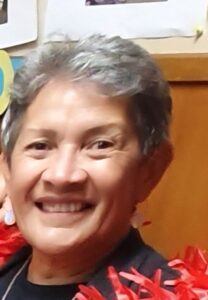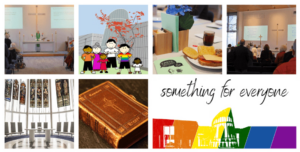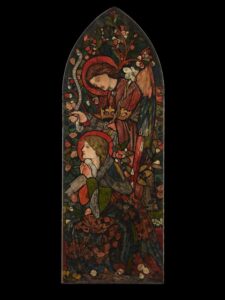[A Feminist Theological Reflection on Luke 7: 36 – 50]
By Lucy Nanson
I am sure this woman was acting spontaneously, and with a love she could not consciously articulate at the time. Hers was a love that does not count the cost – at least not until afterwards.

I have built upon a theological understanding of the story in Luke, by lifting out the lesser character of the sinful woman and placing her in a brief but equal partnership with Jesus, in her expressing unexpected and costly love.
This reflection, combined with Dr Ken Bailey’s video tape, Jesus Interprets His Own Cross [tape 2] was first given at a Sophia Waikato Group in 1998 before it was published in Vashti’s Voices for their autumn edition of 1999
Dr Ken Bailey makes this story more authentic for his listeners by lifting it out of its traditional Western interpretation and placing it in a Middle Eastern understanding which the average reader or listener does not have the opportunity to encounter.
My criticism of Dr Bailey’s interpretation comes from a feminist perspective.
In spite of his expertise in Middle Eastern culture his interpretation is from a typical male Jewish Rabbinic perspective. From my analysis, this limits the story’s theological understanding in its fullest sense. Therefore, I have built upon his theological understanding of that story by lifting out the lessor character of the sinful woman and placing her in a brief but equal partnership with Jesus, in her expressing unexpected and costly love. This theme of unexpected and costly love is the main theme in Dr Bailey’s talks: Jesus interprets his own cross. I am aware I have now changed the focus of this story by placing the woman in a creative partnership of unexpected and costly love with Jesus – brief though it maybe.
I do not doubt that Jesus risked much for her in speaking out against his host’s intentional lack of basic Middle Eastern hospitality for a guest. Jesus also risked much for her in talking about the forgiveness of her sin. Surely she was beyond forgiveness according to the Jewish law. Through his words and actions Jesus was unquestionably ‘nailing himself to his own cross’ by creating enemies among those it was best at all costs to keep as friends within the Jewish community in which he lived and was recognised as a young Rabbi.
Unexpected and costly love
However, I would like to focus on the woman’s actions towards Jesus and their effect on those attending the banquet, rather than focusing on her sin. The lessor character of the sinful woman confronted both Jesus and those attending the banquet with her own unexpected and costly love for him. She risked immediate banishment from the banquet. She risked ridicule by Jesus in performing such a public and provocative attention to his immediate needs as a guest. She expressed a humility far in excess of the servant role of washing and drying a guest’s feet. In washing Jesus feet with her tears she was lowering herself into a very vulnerable and weak position in front of the other guests. The releasing of her hair in order to dry his feet would have been totally misunderstood by the other guests and onlookers. A woman did not reveal her hair in public like that, only in the presence of her husband in privacy. This woman had no husband and the people knew her trade. But this was not the action of a lover. Here was a woman using one of the most sacred and sensual parts of her body to perform the basest of tasks, striping her of even a lover’s dignity.
Kisses of healing love
Jesus was not greeted with the Middle Eastern courtesy of a kiss on the cheek between two Rabbis. Instead the woman began kissing Jesus on his feet, the only place a servant was allowed to kiss a master. Hers was not one kiss, instead it was many. These were not the kisses of a servant, or of a harlot who is paid to kiss the man’s feet. Hers were the kisses of a mother who knows where it hurts most when her young son has been thumped by another boy in a fight. Hers were the kisses of a woman who remembers how her mother kissed her where she had been hurt falling over and bruised in that fall. Those were the kisses of healing love for Jesus.
Seed of truth
She used the expensive ointment of her trade to anoint Jesus feet. An ointment usually reserved for anointing the head of a guest or lover. What a waste! Here was a woman showing a servanthood way beyond the usual use of such expensive perfume. Was her servanthood equal to the servanthood of Jesus in washing his disciple’s feet at the Last Supper? This was undoubtedly an intimate and costly gesture of hers which was sure to bring her even more misunderstanding and humiliation by those present at the banquet. Was her servanthood the ‘seed of truth’ sown in Jesus mind, causing Jesus to ponder this to be one of his last important actions towards his disciples before his crucifixion?
I am sure this woman was acting spontaneously, and with a love she could not consciously articulate at the time. Hers was a love that does not count the cost – at least not until afterwards
I’m convinced that Jesus recognised this extraordinary and costly loving by this woman, since his words reflect this. Emotionally he must have been deeply moved by a love in a woman like this, who had no reason to trust men. Hers was a risking love we may find difficulty in understanding.
Partnership of creative power
We need to ask ourselves, what was Jesus’ response beyond his words recorded in the Gospel? I believe her loving began to heal for him, something of the ridicule, rejection and humiliation, which he suffered at the beginning of Simon’s banquet for all to see. Her loving gave him the courage to speak the truth of the scene revealed for him through her. For a few moments Jesus was not alone. This woman stood beside him in a partnership of creative power of unexpected and costly love.
Carving and restoring
Dr Bailey insists Jesus carved out a place for this woman within the community after he left the village. I’m convinced she carved out a place for herself by her spontaneous and loving actions towards Jesus. While, he stood in a brief partnership with her by articulating for all to hear what she had done, thus enabling her actions to be recognised among the common people and within the structures of their religious-community. Her faith pioneered for others to know, the God who can forgive all sin and restore each person to their created relationship with God. Jesus affirmed this for her through his final words:
“Your faith has saved you. Go in peace”
Notes
Lucy Nanson is an Anglican Anchorite and has had general connections with the Franciscans.
Dr Ken Bailey spent his life working in Arabic and Middle Eastern Churches by studying the Arabic, Syrian and Aramaic literature of the early centuries.



